Because of the fear, anxiety, and losses of the COVID-19 era, many children of all ages are vulnerable and hurting—and supporting their social-emotional health and well-being this year will take sensitivity and skill. In today’s post, we’re sharing 10 quotes from Brookes authors on building strong social-emotional skills, plus tips you can use to ease the recovery process and promote empathy, respect, and emotional regulation.
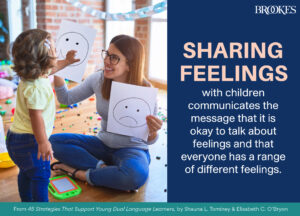 Demystify emotions. Teaching children—as early as possible—to identify their own feelings and understand the emotions of others is a great way to foster empathy and other social-emotional skills. See this post for some fun games you can try with young children to give them a solid foundation of knowledge about emotions. (Quote from 45 Strategies That Support Young Dual Language Learners, by Shauna L. Tominey & Elisabeth C. O’Bryon.)
Demystify emotions. Teaching children—as early as possible—to identify their own feelings and understand the emotions of others is a great way to foster empathy and other social-emotional skills. See this post for some fun games you can try with young children to give them a solid foundation of knowledge about emotions. (Quote from 45 Strategies That Support Young Dual Language Learners, by Shauna L. Tominey & Elisabeth C. O’Bryon.)
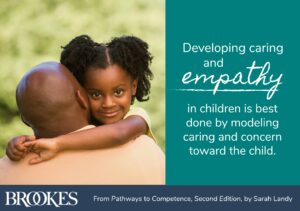 Model empathy. Games and activities are an effective way to teach kids about emotions and help them develop empathy. But even more important is the behavior modeled by the caregivers, teachers, and other adults in their lives. Demonstrate what caring, empathetic behavior looks like, and you’ll likely see learners reflect it back to you and their peers. (Quote from Pathways to Competence, by Sarah Landy.)
Model empathy. Games and activities are an effective way to teach kids about emotions and help them develop empathy. But even more important is the behavior modeled by the caregivers, teachers, and other adults in their lives. Demonstrate what caring, empathetic behavior looks like, and you’ll likely see learners reflect it back to you and their peers. (Quote from Pathways to Competence, by Sarah Landy.)
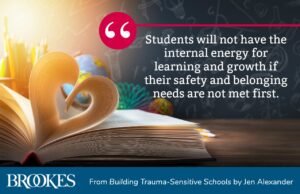 Address trauma and focus on safety. Remember that all students need to feel safe and feel that they belong before they can learn successfully. That’s especially important to remember this fall—you may be seeing a wide variety of social-emotional challenges and behavior issues in the wake of our collective trauma. Jen Alexander, trauma expert and author, has books, webinars, and videos to guide you in creating trauma-sensitive learning environments. See this spotlight page for a collection of some of her helpful resources. (Quote from Building Trauma-Sensitive Schools, by Jen Alexander.)
Address trauma and focus on safety. Remember that all students need to feel safe and feel that they belong before they can learn successfully. That’s especially important to remember this fall—you may be seeing a wide variety of social-emotional challenges and behavior issues in the wake of our collective trauma. Jen Alexander, trauma expert and author, has books, webinars, and videos to guide you in creating trauma-sensitive learning environments. See this spotlight page for a collection of some of her helpful resources. (Quote from Building Trauma-Sensitive Schools, by Jen Alexander.)
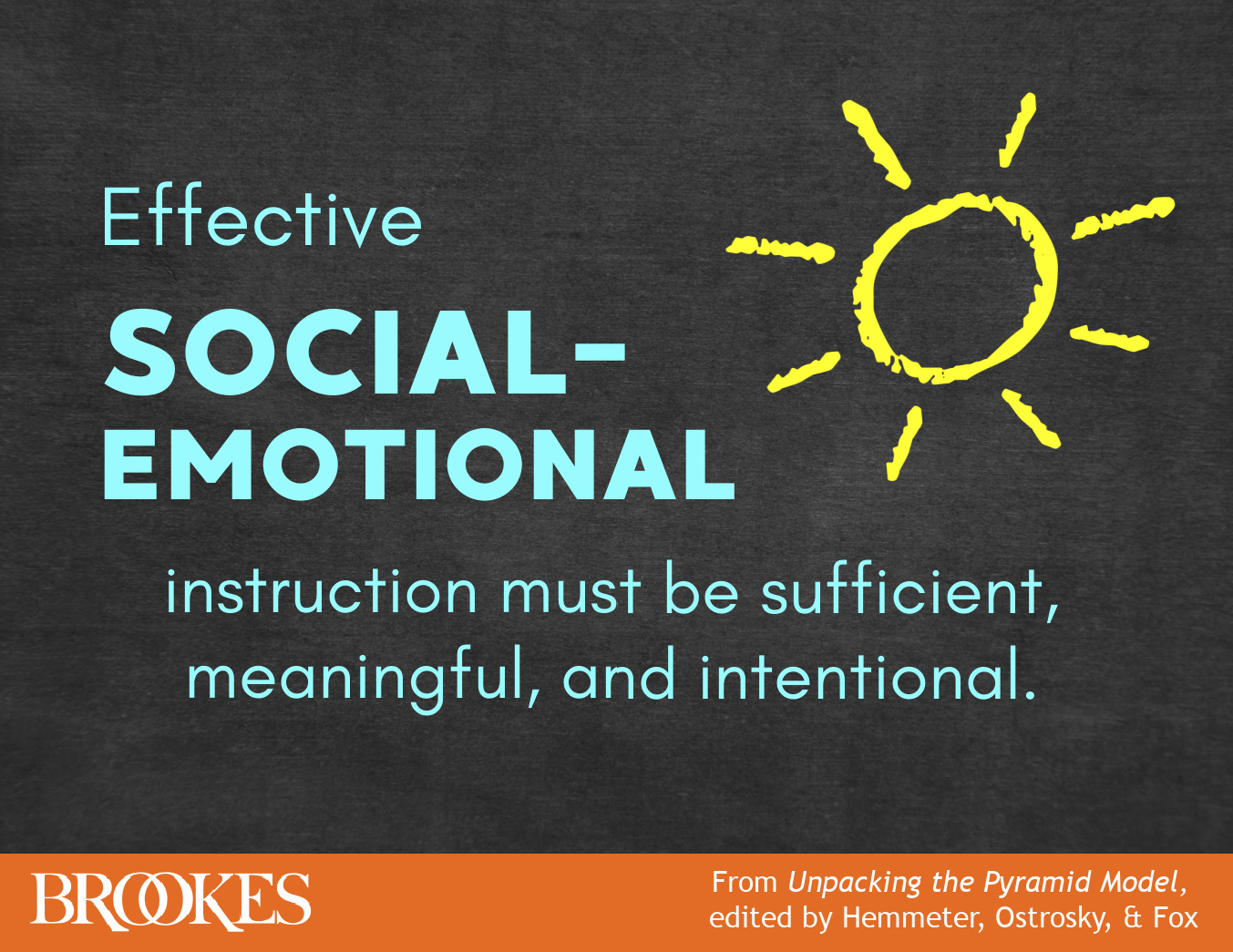
Explicitly teach skills and allow for practice. Focus less on ongoing correction of challenging behavior and more on explicit social-emotional instruction. The popular guidebook Unpacking the Pyramid Model says that “children should have sufficient opportunities to practice meaningful social-emotional skills throughout the school day. Instruction also must be delivered intentionally across the day to facilitate generalization across contexts in which the skills are needed.” (See Unpacking the Pyramid Model by Hemmeter et al. for more specific guidelines on teaching social-emotional skills.)
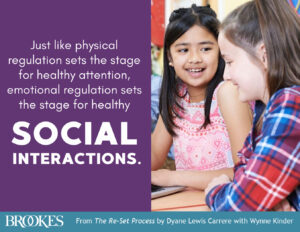 Focus on emotional regulation. Emotionally regulated students can manage emotions, read social cues and contexts, and respond with empathy. Many learners have trouble with emotional regulation, especially when they’ve been through something traumatic (as we all have recently). For a neuroscience-based, trauma-informed process that helps students re-regulate and get ready for learning, pick up this guide to Dyane Carrere’s Re-Set Process, an important resource to have in your toolbox as you and your students navigate the ongoing effects of the pandemic. (You can also read her guest blog post on how to use the Re-Set process with students.)
Focus on emotional regulation. Emotionally regulated students can manage emotions, read social cues and contexts, and respond with empathy. Many learners have trouble with emotional regulation, especially when they’ve been through something traumatic (as we all have recently). For a neuroscience-based, trauma-informed process that helps students re-regulate and get ready for learning, pick up this guide to Dyane Carrere’s Re-Set Process, an important resource to have in your toolbox as you and your students navigate the ongoing effects of the pandemic. (You can also read her guest blog post on how to use the Re-Set process with students.)
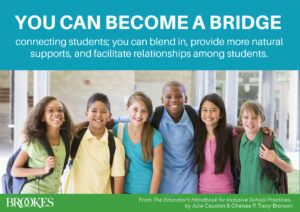 Be a bridge. By facilitating social interactions and then fading your support and involvement, you can be a bridge between students with and without disabilities. See these blog posts for ideas on how to facilitate friendships in the classroom and start a successful peer buddy program. (Quote from The Educator’s Handbook for Inclusive School Practices, by Julie Causton & Chelsea P. Tracy-Bronson.)
Be a bridge. By facilitating social interactions and then fading your support and involvement, you can be a bridge between students with and without disabilities. See these blog posts for ideas on how to facilitate friendships in the classroom and start a successful peer buddy program. (Quote from The Educator’s Handbook for Inclusive School Practices, by Julie Causton & Chelsea P. Tracy-Bronson.)
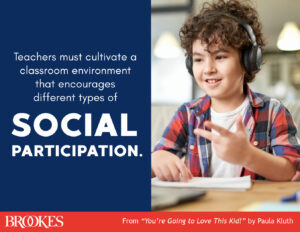 Establish respect for social diversity. Not all students socialize in the same way. That’s an important concept to establish in your inclusive classroom; in her classic bestseller You’re Going to Love This Kid, inclusion expert Paula Kluth says that teachers “will want to clearly communicate to students that there are many ways to engage in conversations, play and socialize, and participate in class.” This will set the stage for relationship-building and acceptance of diversity among all your students. (See our blog post for 3 Ways to Help Young Children Respect and Accept Diversity.)
Establish respect for social diversity. Not all students socialize in the same way. That’s an important concept to establish in your inclusive classroom; in her classic bestseller You’re Going to Love This Kid, inclusion expert Paula Kluth says that teachers “will want to clearly communicate to students that there are many ways to engage in conversations, play and socialize, and participate in class.” This will set the stage for relationship-building and acceptance of diversity among all your students. (See our blog post for 3 Ways to Help Young Children Respect and Accept Diversity.)
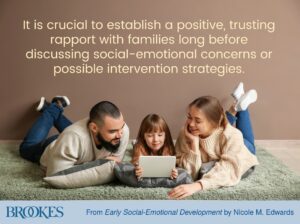 Build rapport with families. As Nicole Edwards points out in Early Social-Emotional Development, it’s important to develop a rapport with families before you can productively discuss a child’s social-emotional support needs with them. While the book quoted is focused on younger children, that holds true for older students, too. See these blog posts for ideas on how to connect with families and develop a collaborative partnership with them:
Build rapport with families. As Nicole Edwards points out in Early Social-Emotional Development, it’s important to develop a rapport with families before you can productively discuss a child’s social-emotional support needs with them. While the book quoted is focused on younger children, that holds true for older students, too. See these blog posts for ideas on how to connect with families and develop a collaborative partnership with them:
- 14 Strategies for Connecting with Families this Year
- 8 Strategies for Engaging the Families of Young Children
- 18 Ways to Connect and Communicate with Families
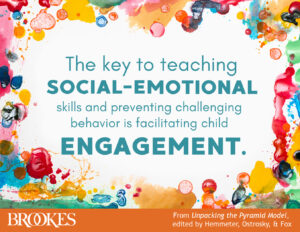 Facilitate engagement. The more engaged your learners are, the easier it is to teach and model social-emotional skills and positive behavior. See Unpacking the Pyramid Model and these two blog posts for ideas on increasing student engagement in your classroom:
Facilitate engagement. The more engaged your learners are, the easier it is to teach and model social-emotional skills and positive behavior. See Unpacking the Pyramid Model and these two blog posts for ideas on increasing student engagement in your classroom:
- Try These Classroom Arrangement Tricks to Maximize Student Engagement (early childhood)
- 7 Budget-Friendly Ways to Promote Student Engagement: A UDL Post (K-12)
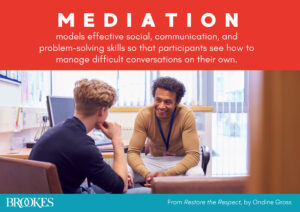 Try a mediation approach to conflict. Support social-emotional success and reduce the impact of unresolved classroom conflict with the teacher-student mediation approach outlined in Ondine Gross’s book, Restore the Respect. As described by the author in a guest post for the Brookes blog, “teacher-student mediation is a highly-structured 50-minute meeting led by a trained adult mediator. The mediator sets the tone and pace of the meeting in order to provide a safe environment for the teacher and student to expand their understanding of each other’s perspectives, rebuild trust in their relationship, and develop a plan to move forward. The meeting is more than simply a conflict resolution opportunity—it is to model social, communication, and problem-solving skills, while rekindling positive regard between the participants.” Read more about mediation here, and explore the book.
Try a mediation approach to conflict. Support social-emotional success and reduce the impact of unresolved classroom conflict with the teacher-student mediation approach outlined in Ondine Gross’s book, Restore the Respect. As described by the author in a guest post for the Brookes blog, “teacher-student mediation is a highly-structured 50-minute meeting led by a trained adult mediator. The mediator sets the tone and pace of the meeting in order to provide a safe environment for the teacher and student to expand their understanding of each other’s perspectives, rebuild trust in their relationship, and develop a plan to move forward. The meeting is more than simply a conflict resolution opportunity—it is to model social, communication, and problem-solving skills, while rekindling positive regard between the participants.” Read more about mediation here, and explore the book.
Do you have a favorite strategy for promoting strong social-emotional skills? Add it in the comments section—and find more practical tips in the Related Posts below!
Stay up to date on the latest posts, news, strategies, and more!
Sign up for one of our FREE newslettersMore posts like this

AUTHOR Q&A: 5 Key Questions About Supporting Grieving Students
May 18, 2021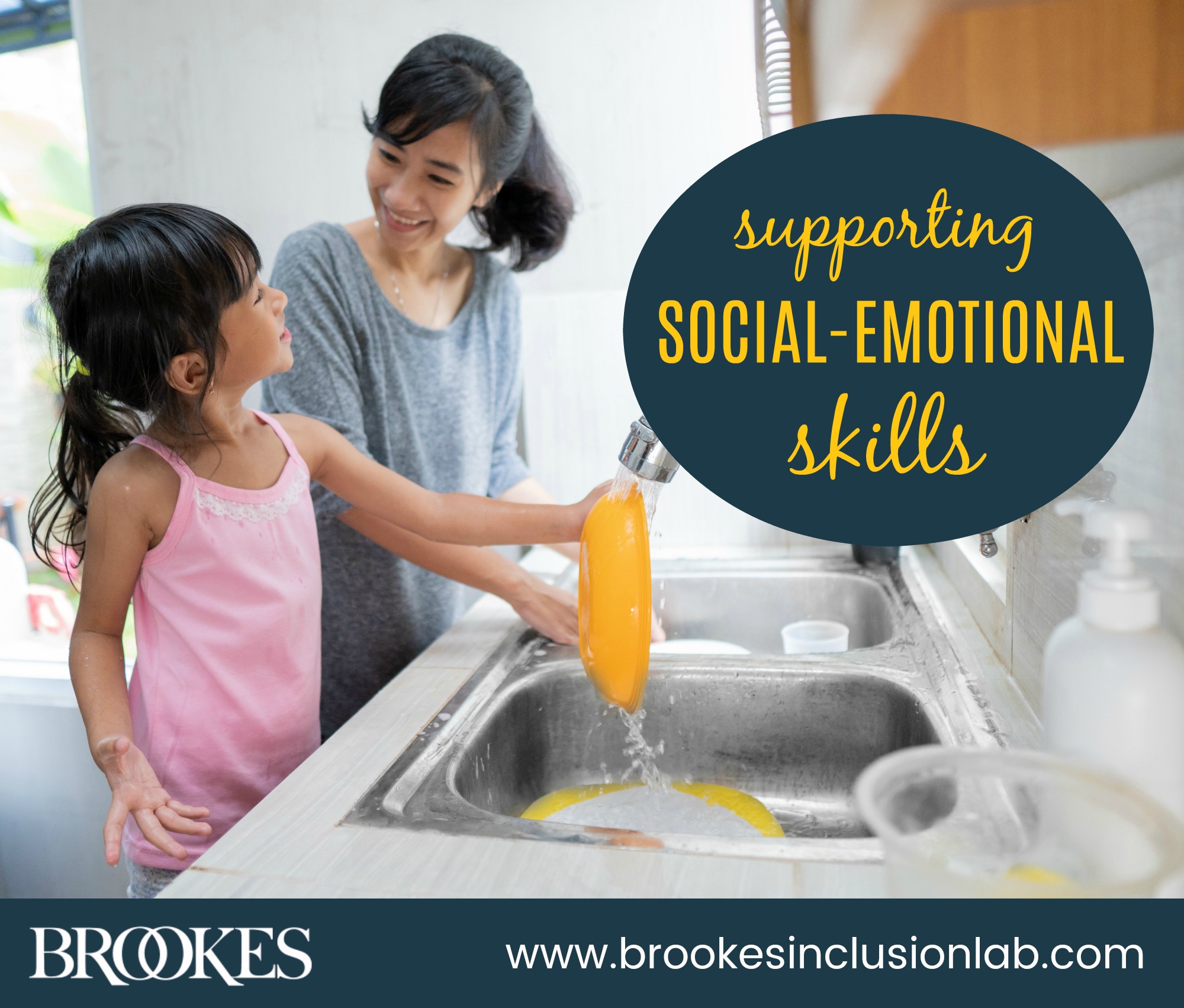
11 Simple Things You Can Do To Support Young Children’s Social-Emotional Skills
October 27, 2020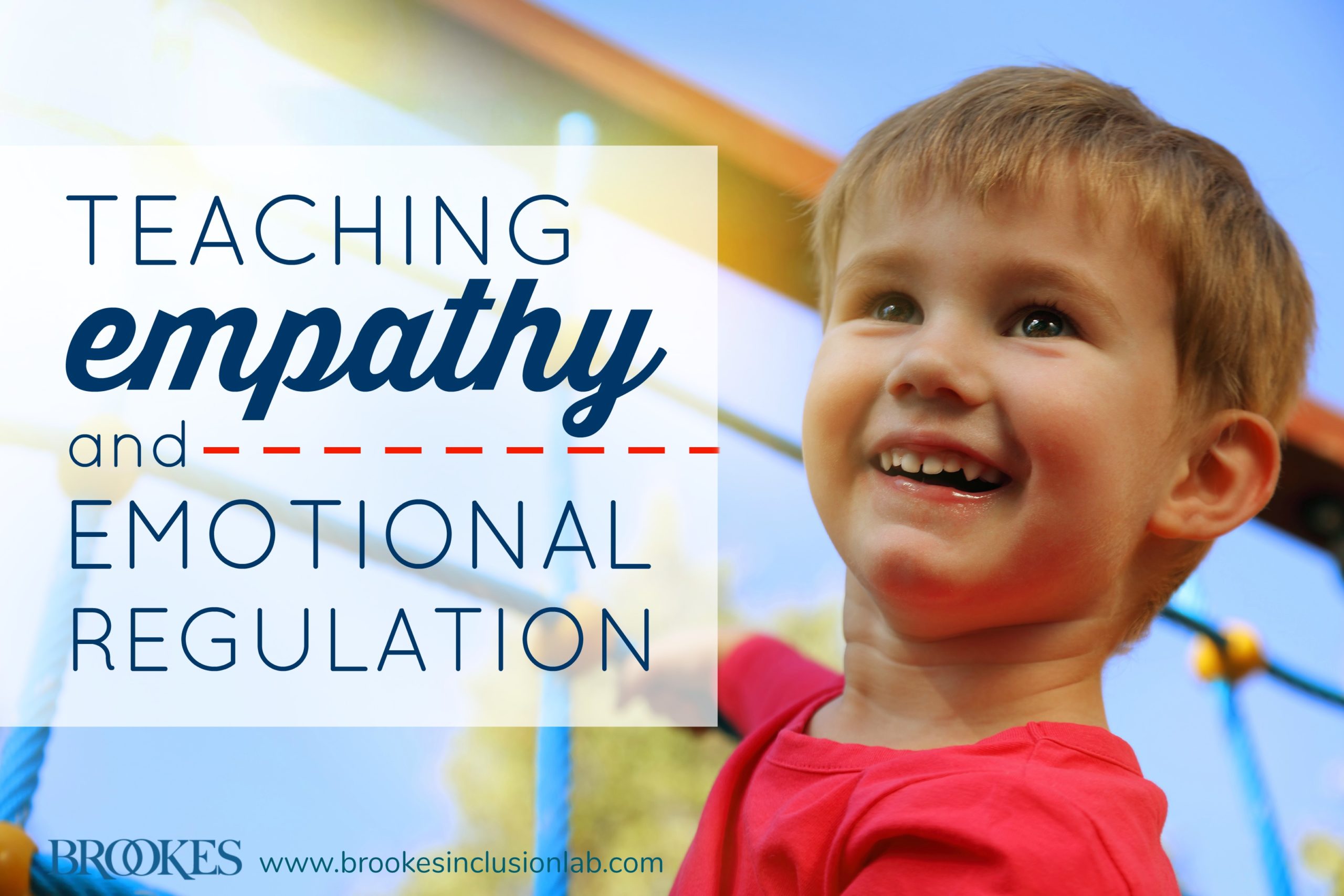

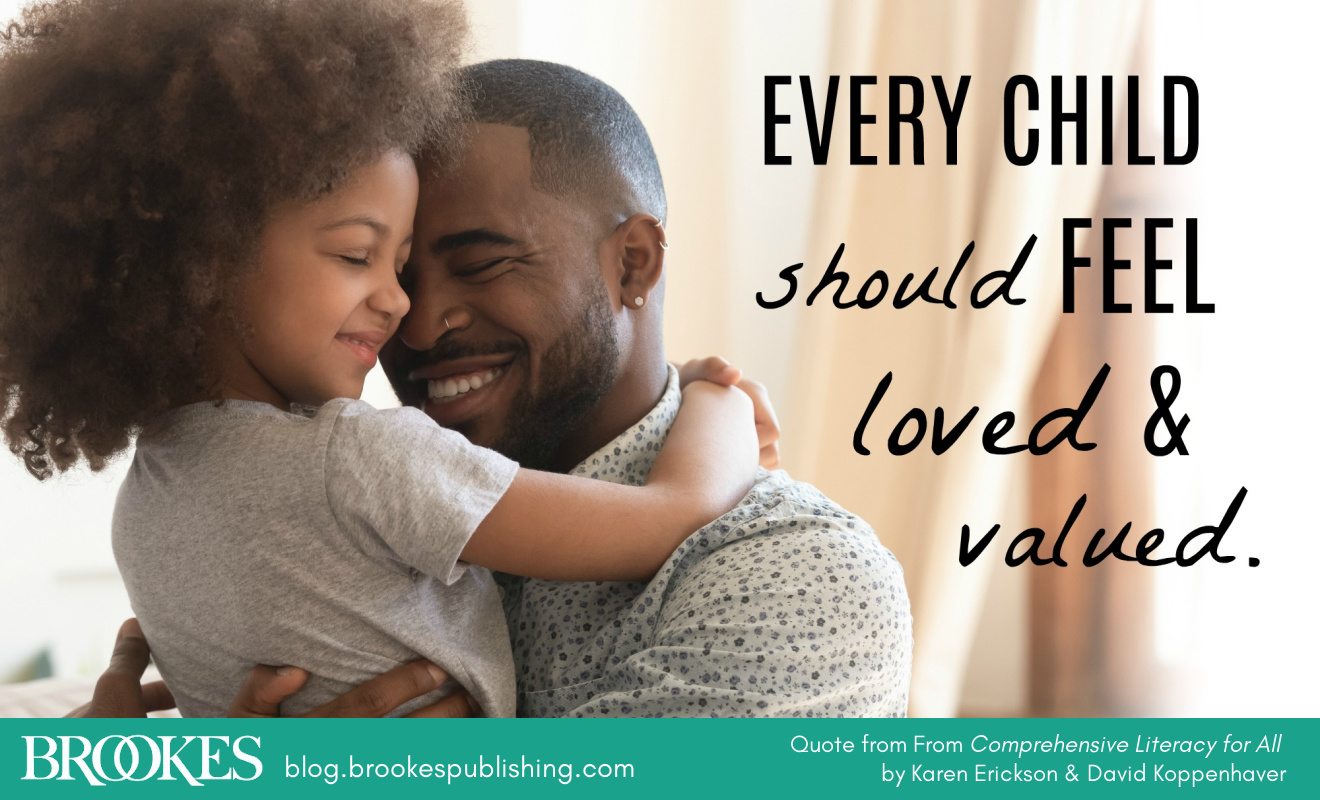
Write a Comment
Your email address will not be published. Required fields are marked *
Post a Comment